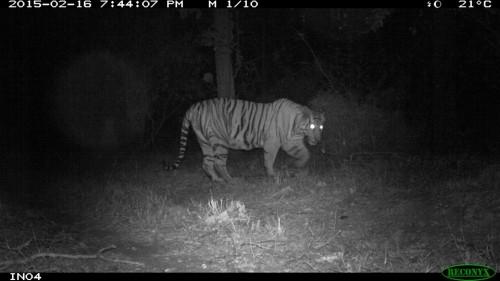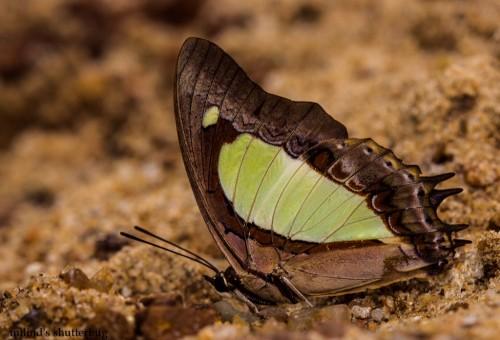Living in Pawani village in Maharashtra one would not usually consider the village to be a tiger territory. Rightly so, as the village does not fall within the boundary of any protected tiger reserve. However, the children of this village studying in Jai Seva Adarsh High School have proved everyone wrong. Armed with highly sensitive camera traps they have visual proof that the tiger not only roams in the vicinity but may in fact be living just 7 km away from their school!
The camera traps which is an important aid to modern conservationists, has found new use among villagers including children of three villages in Maharashtra that were chosen for the eMammal project, an international initiative that encourages locals to study the ecology and wildlife of their area through images and videos. These images uploaded on the eMammal website and facebook page are fast becoming an immense source of local wildlife information for experts as well as creating a generation of young scientists who are aware of their natural surroundings.
North Carolina Museum of Natural Sciences began the eMammal Project in the US three years ago and soon expanded it to two countries – India and Mexico. In India, with support from the Bombay Natural History Society (BNHS) the project is running in three rural schools in Sindhudurg, Palghar and Nagpur.
Rahul Khote, a curator with BNHS and in charge of the project in India says such ‘citizen scientist’ projects sometimes get more information about the local environment than scientific researches.
And to prove the point, the eMammal project has indeed left locals and experts marveling equally at the diversity of wildlife spotted in their area.
eMammal India
After being trained by the experts from North Carolina, the teachers and students from the 3 Indian schools, set to work in 2014 by setting camera traps in the forest areas of their neighbourhood. The citizen scientists were soon hooked as the images clicked by the camera traps showed an array of mammals living around them. Some of these were also animals the children had never seen before like the ring tailed small Indian civet, a shy nocturnal animal.
“In the past six months, our children have captured on camera at least 10 to 12 species of mammals, some of which they had never seen before,” said Prasad Gawade, a teacher at Amboli’s Union English School.
The project has been such a huge success that the children keenly look forward to their field visit on Sundays when they can check the camera traps for latest snapshots of wildlife around them.
Gawade explains that the school has been given 3 camera traps that they need to place at different locations each week. They have already covered 16 locations and will cover more in the next 6 months.
In Nagpur the cameras have revealed another surprise. The camera traps placed by the children clicked images of a wild tiger twice, showing that the big cats use the same route at night that the villagers use during daytime! A tree scratched by a tiger, marking its territory was found merely 7 km from the school.
“Discovering which non-protected areas tigers are using to connect their populations between parks is very important, and it’s amazing that these school kids were able to help collect this data,” said Roland Kays, director of the Biodiversity Lab at the North Carolina Museum of Natural Sciences.
Future scientists
The eMammal project has given children a new way of connecting with nature and contributing to the conservation of these habitats and wildlife. Because these young enthusiasts are involved in the ground level work, they understand the implications of habitat destruction better.
The project is also allowing kids from different parts of the world interact and inform each other about the wildlife they witness in their areas. This is helping them understand the universal ecological problems much better.
It’s definitely an initiative in the right direction.
All images courtesy the eMammal Project. You can also visit their facebook page to know more.
This article was written by Atula Gupta, the head administrator for indiasendangered.com. This article has been republished with permission, original article here.




